About Pompeii
Why Visit Pompeii?
Discover Pompeii Ruins
The House of Vettii is a prime example of Roman domestic architecture and art. It was owned by two successful brothers, Aulus Vettius Restitutus and Aulus Vettius Conviva and dates to 65-79 C.E., and was lavishly decorated with fine mosaics and frescoes.
Also Read: Plan Your Visit to Pompeii
This large villa dates to the 2nd century BCE and features several stunning frescoes depicting Roman life and mythology scenes. The best-preserved and most famous frescoes here depict a Roman religious ritual, which scholars believe may have been part of a mystery cult.
Suggested Reads: Things to Do in Pompeii
The Temple of Apollo is one of the Roman period's most famous and well-preserved temples. It was built in the 6th century BCE and underwent several renovations by the Greeks and Romans over the centuries. The Temple of Apollo is a classic example of Roman architecture, with its stately columns and beautiful sculptures.
You May Also Like: Best Time to Visit Pompeii
Pompeii's most renowned house is the so-called House of the Tragic Poet. The mosaics and frescoes found here are some of the finest examples of Pompeian art. But what makes this house so special is its unique story, which has been pieced together by archaeologists over many years.
Also Read: What to See in Pompeii
Lupanare is an ancient brothel located in the city of Pompeii, Italy. It was discovered in the ruins of Pompeii in 1863 and is one of the best-preserved brothels from the Roman era. The Lupanare consists of 10 small rooms, each with a stone bed and an assortment of erotic paintings and graffiti providing insights into the sexual customs of the ancient Romans.
Also Checkout: Restaurants near Pompeii
The House of the Faun, located in Pompeii ruins, is one of the largest and best-preserved homes from the Roman period. The house gets its name from the mosaic of a faun playing the flute found in the atrium.
Recommended Reads: Naples to Pompeii Day Trip
The Forum of Pompeii was the center of public life in the ancient Roman city of Pompeii. It was located in the eastern half of the city and was open to the public from sunrise to sunset. The forum was the site of many important civic and religious ceremonies and a marketplace where goods and services were traded.
Built around 80 B.C., they feature three main rooms: a frigidarium (cold room), a tepidarium (warm room), and a caldarium (hot room). It provides insight into the Roman way of life. The baths were used for public bathing, socializing, and relaxing.
Must Read: Rome to Pompeii Day Trip
The Amphitheater of Pompeii ruins was a source of great pride for the people of Pompeii. It was one of the first amphitheaters in the world and was built on stone that occupied a capacity equivalent to the population of Pompeii. It was a great example of the engineering and architectural prowess of the Roman people.
Suggested Reads: Pompeii Guided Tour
The temple of Isis was one of the most important temples in Pompeii. It was built in the 2nd century B.C. and was dedicated to the Egyptian goddess Isis. It was decorated with Egyptian symbolism and art and contained a sacred Isis statue.
Recommended Reads: Pompeii Day Trip
Architecture of Pompeii
The architecture of Pompeii is characterized by its use of stone and brick and its incorporation of traditional Roman architectural elements. Its ruined state has allowed modern-day archaeologists to get a unique glimpse into the everyday lives of ancient Romans. Pompeii was built on a grid system, with north-south and east-west streets. Houses in Pompeii were often built around an atrium, which served as a garden or gathering space. One of the most famous houses in Pompeii is the House of the Faun, which contains an impressive atrium with a bronze statue of a faun playing the flute. The art of Pompeii is characterized by its vivid colors, realism, and often erotic content. Frescoes (wall paintings) and mosaics were the most common type of art found in Pompeii. Many frescoes depict Greek and Roman mythology scenes, while others show everyday life or landscape scenes.
Also Checkout: Pompeii Museum
History of Pompeii Ruins
Plan your visit
By train: - The Circumvesuviana railway line runs from Naples to Pompei Scavi, the nearest station to the archaeological site. The journey takes around 40 minutes. Once you've arrived at the station, it's a 10-minute walk to Pompeii entrances.
By car: - If you're driving from Naples, take the A3 motorway towards Salerno. Exit at Pompeii and follow the signs for the archaeological site. Parking is available near the entrance gate.
By bus: - Several companies run buses from Naples to Pompeii. The journey takes around an hour. Once you arrive in Pompeii, it's a short walk to the entrance gates.
The opening hours to Visit Pompeii differ season-wise, but the Pompeii archaeological site is generally open every day from 9 am to 7 pm. It is closed on 25 December (Christmas Day) and 1 January (New Year's Day). The ticket office closes 90 minutes before the site closes.
Tourist season in pompeii ruins runs from April through October, with July and August being the busiest months. If you want to avoid crowds, plan your trip for September or October. You'll still enjoy the same sights and activities as peak season visitors, but you won't have to fight for space on the sidewalks or at popular attractions.
- Luggage storage available
- Wheelchair access
- Restaurants and Cafes
- ATM
- Public washrooms
- Bookshop
Before you start planning your trip to Pompeii ruins, you should keep a few things in mind. Here are our top tips:
- Wear comfortable walking shoes: You will be doing a lot of walking on uneven ground.
- Bring water and snacks: There are cafes near the entrance to the archaeological site, but they can be expensive.
- Plan your Visit to Pompeii in advance: You can buy tickets online or at the ticket office near the entrance to the site.
- Bring a hat and sunscreen as it can get very hot, especially in summer.
- Prepare to spend a good 4-6 hours at the site.
FAQs
Who built Pompeii?
Pompei was established in the VII century B.C. by the Oscans, who lived on the slopes of Vesuvius and in a place not far from the river Sarno.
Must Check: Pompeii, Amalfi Coast, and Positano Day Trip from Rome
Why is Pompeii important?
Pompeii is one of the most famous archaeological sites in the world. The city was destroyed by a volcanic eruption in 79 A.D., but the site has been preserved by the ash and pumice that covered it. Pompeii is an important site because it provides a unique glimpse into the everyday life of ancient Roman people.
Also Checkout: Pompeii Antiquarium
Why should I Visit Pompeii?
Here are some of the reasons why you should Visit Pompeii on your next trip to Europe:
- You can explore an entire Roman city that's been perfectly preserved.
- You'll get a real sense of what daily life was like in Roman times.
- You can see some of the most impressive examples of classical architecture.
- It's an excellent opportunity to learn about ancient history.
- Pompeii is easy to reach from many European cities - it's just a short train journey from Naples
Must Read: Day Trips from Pompeii
What is Pompeii famous for?
Pompeii is a small town in Italy that was destroyed by a volcano in 79 A.D. The town is now famous for being one of the best-preserved archaeological sites in the world.
Where is Pompeii?
Pompeii is located in the province of Naples, about 25 miles (40 kilometers) southeast of the city of Naples. It is easily reachable by car, train, or bus from Naples.
Must Checkout - Vatican Library
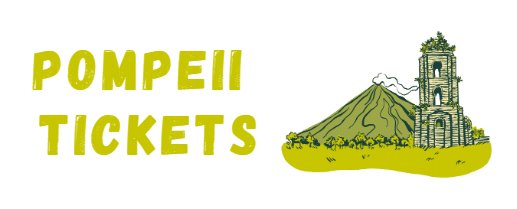














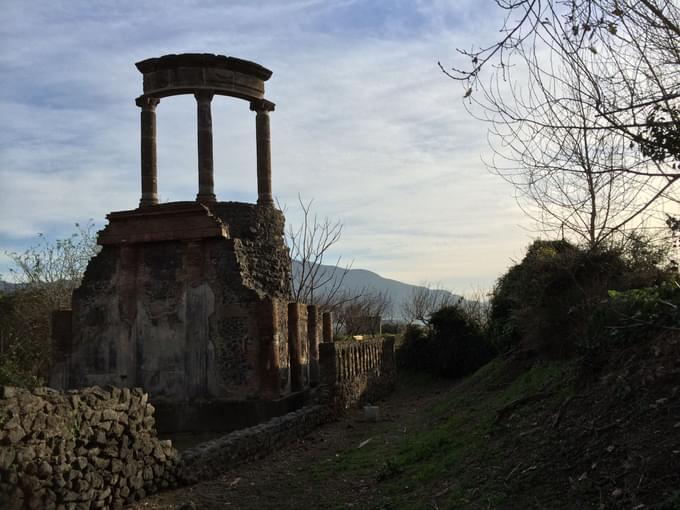
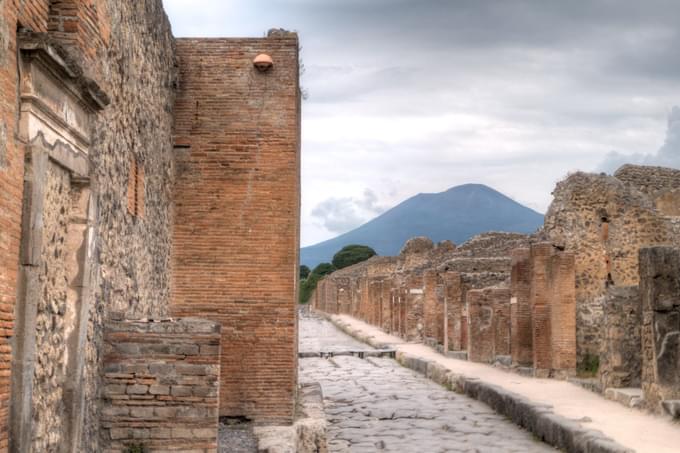
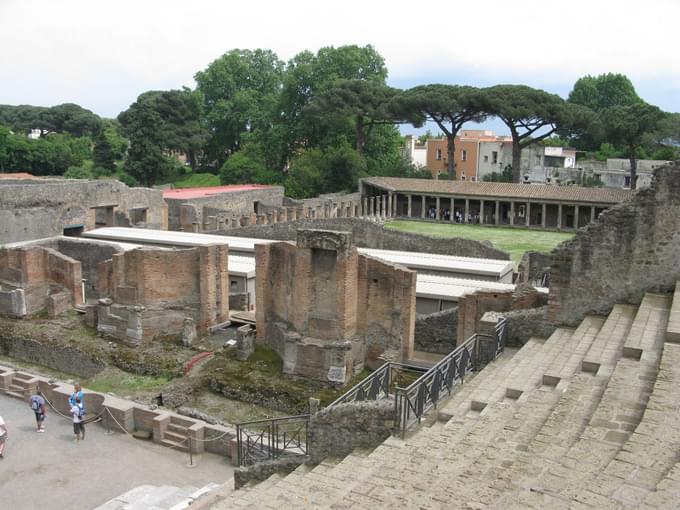
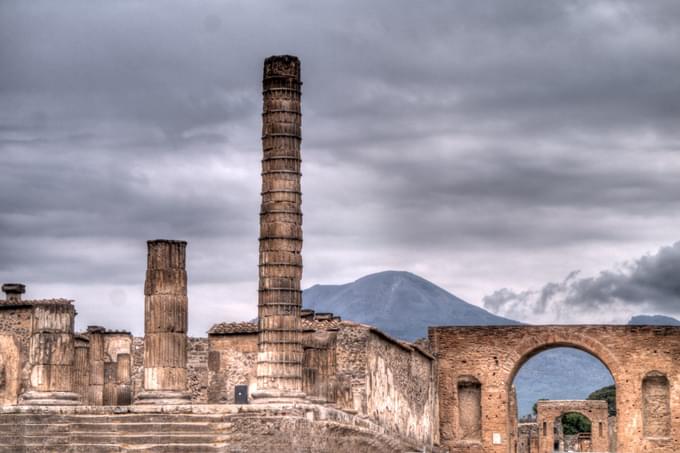
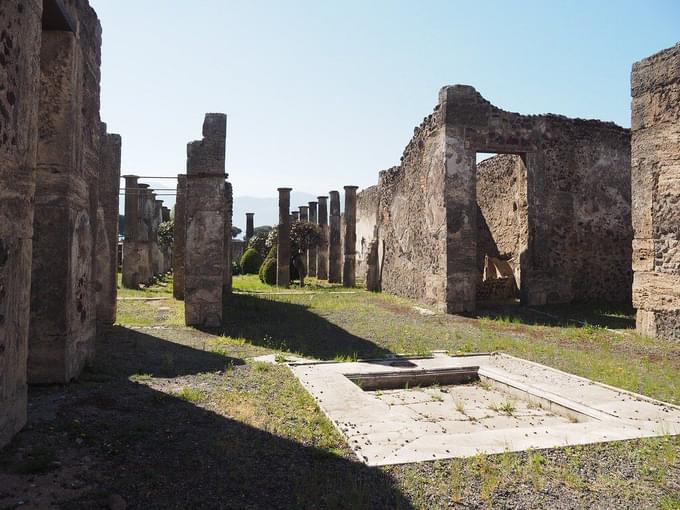


.jpg?w=340&dpr=2)











